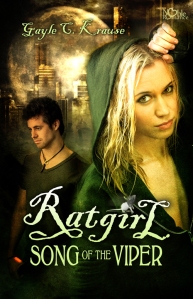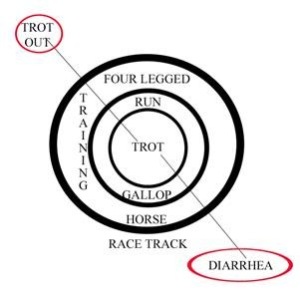It’s Halloween and what better day for an author to hop into the woods. It’s gray and cloudy. Stormy winds are stirring and getting ready for a howling good evening. But before I run off to greet the ghouls and goblins at my door, it’s time to join the author blog hop.
I was invited to participate in the blog hop by my great friend and critique buddy Gayle Krause. Gayle is a prolific author with an entertaining blog of her own. Please hop back and visit her blog, The Story Teller’s Scroll, after you spend a short time with me. Now to answer those author questions:
- What are you currently working on? At the moment I am working on a middle grade steampunk story. The idea came from a bit of back story in my short story My Dangerous Heart. One of the lead characters had an unusual occupation as a boy and I decided to explore that occupation with a new character in a novel.
- How does it differ from other works in the genre? Steampunk stories are generally geared for a YA audience, but the protagonist in my novel is a bit younger. At 14 he should appeal to middle grade readers, although his hard life has forced him to ‘grow up’ fast.
- Why do you write what you do? I’ve always been a prolific reader. I write the kind of stories that I love to read. Real life items get thrown into the pot to be simmered down with imagination and come out reinvented. I love fantasy and nature and finding the ‘magic’ in the most mundane things.
- What is the hardest part about writing? For me the hardest part is to silence the perfectionist. I can get trapped refining and editing a scene and never move on to the next one. It’s great to have a perfect opening, but eventually you have to let go and write the rest of the story.
Now that I have given you a peek at my creative process, let me introduce the two fellow authors who will be moving the author blog hop forward in November.
The first one is Jennifer Carson. Jennifer was my editor for the steampunk anthology, Real Girls Don’t Rust. Jennifer is a dream editor, supportive and caring about her authors with a good ear for fine tuning a story. You can visit her at her blog: The Dragon Charmer. As well as being a great editor, she is an author of fantasy tales such as Hapenny Magick. Jennifer Carson lives in New Hampshire with her husband, four sons and many furred and feathered friends. She grew up on a steady diet of Muppet movies and renaissance faires. Besides telling tales, Jennifer likes to create fantasy creatures and characters and publishes her own sewing patterns. She is also the head Mid-grade editor at Spencer Hill Press.
The second author I’d like you to meet is Rachel Schieffelbein. You can visit Rachel at her blog: Writing on the Wall. Rachel was one of my fellow authors from the anthology, Real Girls Don’t Rust. In her tale, Seeing Red, she turned the story of Little Red Riding Hood on its head.
Rachel Schieffelbein lives with her husband and their four kids in the same tiny town she grew up in. She spends her time reading, writing, and coaching high school speech and theater. She enjoys writing characters she can relate to, ones she would want to hang out with, or fall in love with. She hopes her readers will love them, too. Her debut novella,Secondary Characters, came out last spring from Swoon Romance.
Now I think I hear the first goblins scratching at my door, so I will have to leave you. Make sure you hop forward to visit Jennifer and Rachel and back to see Gayle and all the other authors before her. That’s what blog hopscotch is all about, meeting new and exciting authors. Enjoy!






